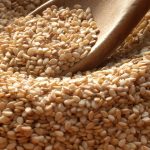
Free radicals, oxidative stress, premature cell death – you might have come across these terms in magazines or advertisements, dear readers. They sound alarming, and indeed they are; according to the latest knowledge, they are highly likely responsible for early aging processes and even the onset of diseases.
Free radicals and oxidative stress can attack our cells. Cells, in turn, are the most valuable asset of our body: Only when they function well are we healthy and resilient. Additionally, the rate at which we age is closely tied to the condition of our cells.
Anything that damages cells beyond a regular level generates cellular stress. The consequences include early signs of aging in the skin, damage to DNA and mitochondria, tissue alterations, and destroyed nerve cells.
External stressors, mainly oxygen, nutrient deficiency, heat, cold, viruses, heavy metals, and environmental toxins, significantly impact the body. Stressors originating within cells are primarily the reactive oxygen species, which directly attack or even destroy cell components or elements.
Regardless of the type of stressors, they trigger the same reactions in our organism. In essence, these reactions positively stabilize the reproduction of our cells, serving as the body’s “toughening.” However, if the assaults are too severe, cells can be damaged – leading to premature cell death. As we age, the cells’ ability to self-repair diminishes, and thus, the aging process progresses.
REMEMBER!
The state of our cells determines how quickly we age.
Effects of Free Radicals in the Body
While external stressors like UV radiation, nicotine, and alcohol are relatively avoidable, it’s not as simple with stressors originating from within. They arise as byproducts of cellular respiration. Because they react with oxygen, they are termed “reactive oxygen species,” or ROS. Free radicals are also part of these species. They are molecular fragments with a free electron. Free radicals extract electrons from other molecules to become stable whole molecules. This process occurs continuously as a natural process in every cell of our body. Especially during energy production, free radicals are generated incessantly. Their release is not only entirely normal but also purposeful, as free radicals train our immune system. The problem arises only when they appear excessively.
The target of free oxygen radicals in the cell is usually the delicate cell membrane: molecules are closely packed there, making it easy for free radicals to snatch an electron. This action can damage or even destroy the membrane. Consequently, free radicals might penetrate the cell’s interior and damage the genetic material (DNA). When the DNA is altered, this effect transfers to the next generation of cells. On our skin, such damages manifest as wrinkles or pigment alterations, known as age spots. They are a clear sign that during skin renewal and cell division, faulty cells have emerged. As the skin acts as our protective barrier between the body and the environment, external causes for free radicals significantly affect it.
When our antioxidative defense systems malfunction, the development of various diseases is also favored. Tissues and structures of the body whose cells either cannot replicate or reproduce themselves only partially are especially susceptible. Consequently, diseases often attributed to age but actually stemming from excessive oxidative stress occur more frequently:
- Atherosclerosis
- Autoimmune diseases
- Cancer
- Parkinson’s/Dementia
- Metabolic disorders like Diabetes
REMEMBER!
Free radicals are not inherently bad. Only when they outnumber the body’s defenses do they cause irreparable cell damage.
Taming Free Radicals
In moderation, oxidative stress trains the immune system, thereby protecting the skin, organs, and tissues. If it were completely contained, an essential “stress reaction” would be missing. As always, the dose makes the poison. When this balanced system derails, it becomes dangerous for the cells.
Numerous studies have demonstrated extensive preventive effects through the intake of antioxidants. The body can produce these antioxidants from food. Fruits and vegetables contain numerous antioxidants such as vitamins C, E, and A, coenzyme Q10, and carotenoids.
The quality and effectiveness of antioxidants are internationally measured as ORAC (= Oxygen Radical Absorption Capacity). The unit for this is usually micromoles Trolox Equivalent per 100 grams. A recommended daily intake ranges from 3000 to 7000 ORAC units.
Good ORAC sources include blueberries, cranberries, artichokes, blackberries, plums, raspberries, strawberries, and apples.
REMEMBER!
Fruits and vegetables contain numerous antioxidant nutrients that can neutralize free radicals.
These Smoothies Act as Antioxidants
Smoothies are quickly blended and contain a variety of fruits and vegetables, offering readily available nutrients, actively helping neutralize free radicals. These four smoothies are particularly rich in antioxidants.
- Blueberry-Blackberry Smoothie Recipe
- Strawberry-Coconut Smoothie Recipe
- Kale Smoothie Recipe
- Anti-Craving Detox Smoothie Recipe
KEY TAKEAWAY
Body cells are subjected to oxidative stress daily. This stress boosts cell defenses, but in excess, it can harm or even destroy them. A primary source of oxidative stress is free radicals, which extract electrons from other molecules, weakening them. A cell can be so damaged by free radicals that its genetic makeup changes, leading to phenomena like age spots on the skin.
A healthy diet and exercise help maintain a healthy balance of free radicals. Many vital nutrients in fruits and vegetables neutralize free radicals, thereby protecting cells from premature aging. Combining a healthy diet with an active lifestyle and avoiding stress factors like smoking, excessive alcohol consumption, and too much UV radiation actively counteracts premature aging.


